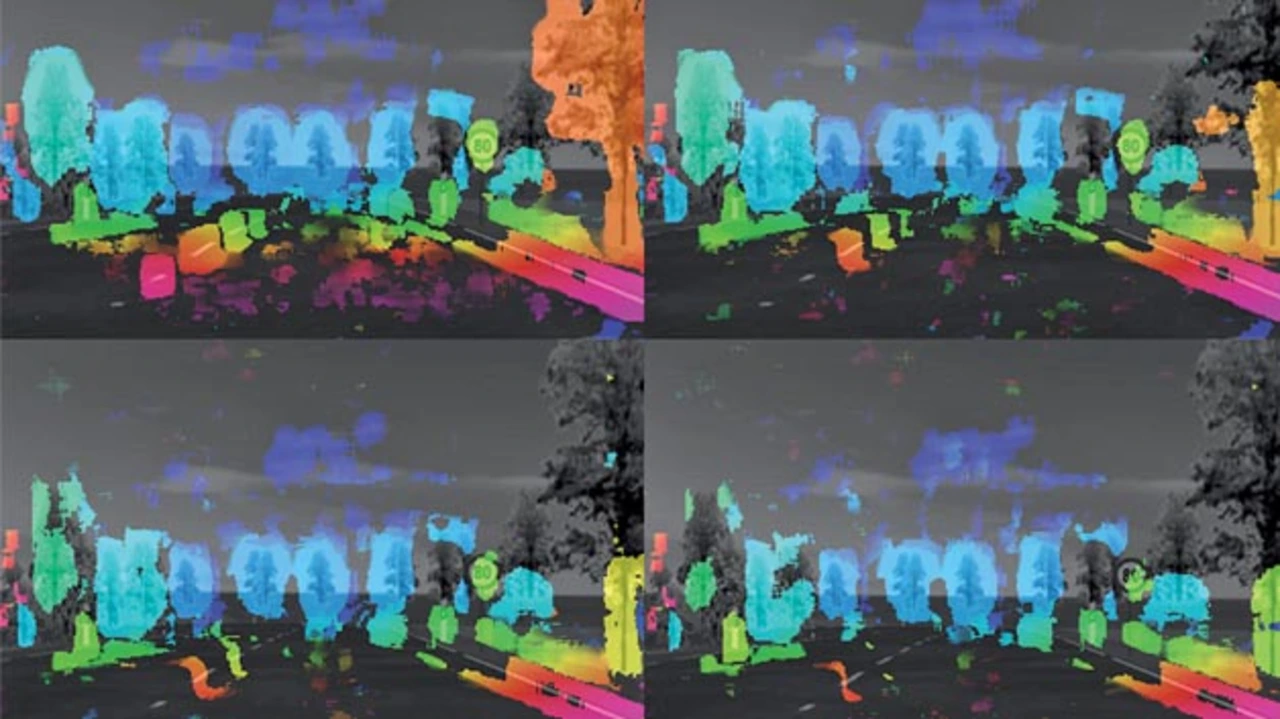MOST Network and System
Virtual Prototypes – Evaluation Framework for MOST-based ADAS
Fortsetzung des Artikels von Teil 2
Impact of communication technology on the application
The stereo depth map calculation needs the synchronous delivery of the two preprocessed camera images. If the images are not associated with additional information like a sequence number, it is necessary for the receive buffers to contain continuously synchronised camera images. Therefore, the communication network has to ensure that the left and right camera images are always transmitted in pairs between two subsequent read accesses. Different aspects of the communication network can affect this behaviour. There could be permutations because of e.g. a shared communication channel with non-deterministic access behaviour. Different channel types or channel utilisations could result in varying delays, causing old image instances to be used.
Jobangebote+ passend zum Thema

Figure 2 shows a stereo depth map with different displacements between the left and right camera image. The nearby objects appear with warm colours, starting from red, and the distant objects appear in cold colours, like blue. The nearer the object, the warmer its colour is, and vice a versa. In the upper left corner, you can see the resulting image with synchronous left and right images. The tree in the front at the right corner of the graphic is well detected. In the top right image, a displacement of one frame between the left and right camera is introduced. The depth information does not cover the complete tree. In the bottom right graphic, a displacement of three frames is inserted. Here, the tree is almost undetected and the information about the distance differs.
The isochronous channel of MOST is the best suited channel for this task. It offers a non-shared channel with a deterministic delay. Because of the continuous image stream, no bandwidth will be allocated unnecessarily. A huge benefit of this channel is that it allows a 1-to-n communication, enabling the reception of the camera image by the preprocessing device and the HMI, which calculates an overlay with depth information.
- Virtual Prototypes – Evaluation Framework for MOST-based ADAS
- Evaluation Framework – Use Case ADAS
- Impact of communication technology on the application
- Optimization of system parameters
- Evaluation of packet channel sharing applications
- The authors
- The authors